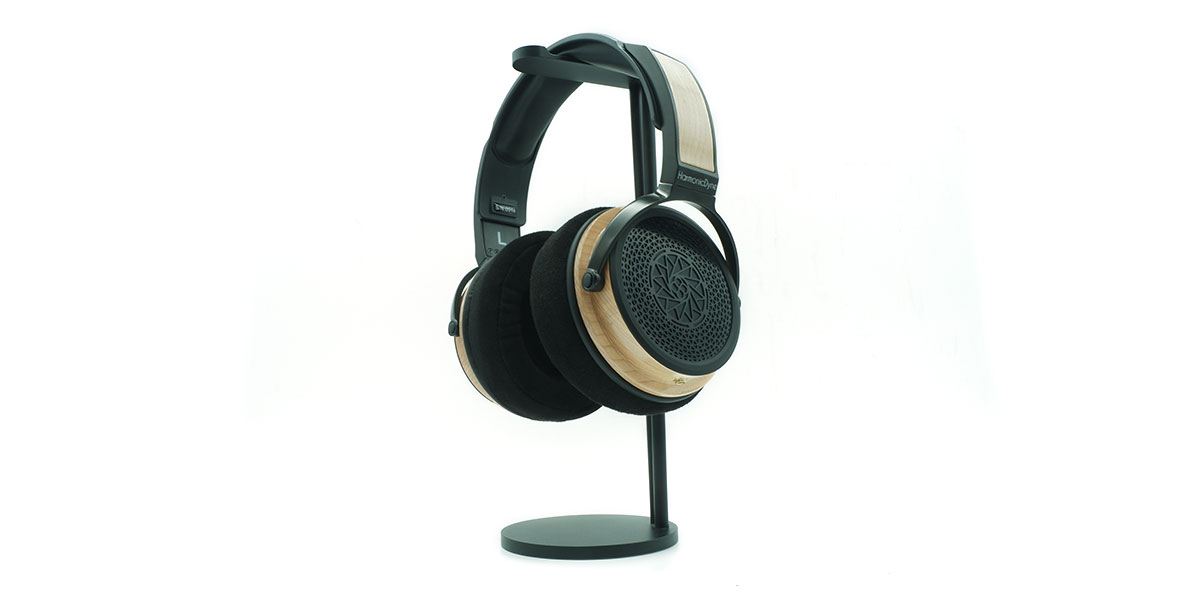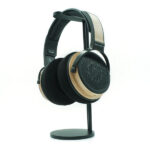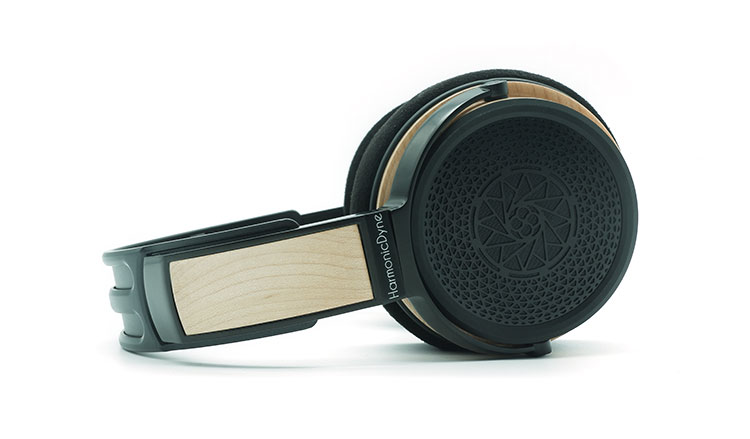HarmonicDyne Poseidon is a new maple accented open-back headphone featuring a 50mm nickel diaphragm dynamic driver. It is priced at $435.
Note, that the Poseidon is currently being offered via Kickstarter for a limited period of time with early bird prices as low as $279.
Disclaimer: The HarmonicDyne Poseidon sent to us is a sample in exchange for our honest opinion in this review. We thank the team at Linsoul for giving us this opportunity.
To read more about HarmonicDyne reviews previously done on Headfonics please click here.
Note, this 2-page review follows our new scoring guidelines for 2020 which you can read up on here.
Linsoul seems to be building up a head of steam with their Harmonic Dyne brand with the recent launch of their 3rd headphone project, the open-back Poseidon on Kickstarter.
We previously reviewed the Zeus which came equipped with a 50mm Beryllium driver and a slightly darker tuning. This time the Poseidon is packed with a brand new dynamic driver and at $435 it also replaces the Zeus as the company’s flagship headphone.
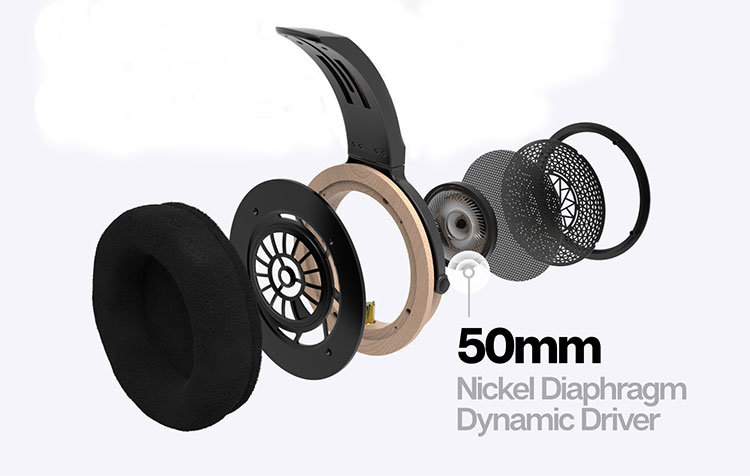
Tech Highlights
Like its predecessors, the Poseidon also has an open-back design and is still equipped with a 50mm dynamic driver made of nickel.
While Beryllium as a dynamic driver material has been lauded for its stiffness and high fidelity reproduction of audio, HarmonicDyne has found that purified laboratory-grade Nickel is a stiffer and more responsive diaphragm material. This results in greater clarity and articulation with reduced distortion in the low frequencies.
The 50mm driver size allows the Poseidon to still have rigidity while remaining large enough to produce authoritative bass reaching down to 10Hz. This results in an experience similar to having a subwoofer in the room.
Design
When looking at the Poseidon, the design is sleek and contrasting, with a mostly black finish on its metal parts. The earcups and the headband, on the other hand, have a glossy wood veneer that nicely complements the darker finish on the rest of the headphones.
With an open-back design, the back of the earcups has a metal grill that covers the inside of the drivers. The grills are finished in a matte black paint that gives it a subdued look, while also blunting all the edges of the patterns on the grills to ensure that you will not get your fingers nicked while touching the grills.
The headband on the Poseidon allows for articulation both horizontally and vertically. This articulation allows the headphone to be adjusted however the way the user wants to find the proper fit. However, the hinges that allow for this articulation are very smooth, and a bit too easy to adjust, so picking them up will make the earcups flop around a bit before you can wear them properly.
On each earcup, there is a 3.5mm TRS jack, which means that the Poseidon has a dual-entry system that allows for balanced cables. The choice of a more standard 3.5mm TRS jack also ensures that it will be easy to find aftermarket cables for the Poseidon.
Comfort & Isolation
Weighing in at just 380g, the Poseidon is about average compared to other full-sized dynamic driver headphones and lighter than most planars. The Poseidon has a more traditional headphone design, with the adjustment mechanism built into the headband itself.
The number of adjustments that are available on the Poseidon is fine enough to allow for a wide variety of head sizes, so I wouldn’t worry about finding the right fit in the headband adjustments.
Earpads on the Poseidon are made of velvet material, while each earcup is stuffed with a soft foam material. The holes in the earpads are large enough to ensure that my ears don’t touch any part of the inside of the earpad, or the driver baffles itself.
On top of the headband is a leather pad with some foam material. Although it’s not the softest foam, it’s still soft enough to ensure that there won’t be hotspots on top of my head.
Overall, the earpads and the pad on top of the Poseidon ensure that it will provide a comfortable experience that will allow you to wear it for hours without the headphone weighing down on you.
Stock Cable
While it would be easy to find an aftermarket cable for the Poseidon, the cable that it comes with doesn’t necessitate finding an after-market cable so quickly. The cables are terminated in 3.5mm TRS on the headphone side, while the other end is terminated with 4-pin balanced XLR.
The length of the cable from the earcups going into the splitter is covered in PVC insulation which makes the cable soft enough to ensure that it won’t make a sound when you move your head around.
After the splitter, the cable is larger in diameter and covered in braided cloth that may be a bit stiffer, but still soft enough to not get in the way.
While the Poseidon is terminated in 4-pin balanced XLR by default, Harmonic Dyne also provides a converter from 4-pin XLR to ¼” single-ended connections. This ensures that the Poseidon is compatible with most desktop amplifiers right out of the box.
Packaging & Accessories
The Poseidon is packed inside a plain brown courier box with the HarmonicDyne branding on the outside and stuffed with plenty of padding to ensure that the contents would survive the journey without a scratch.
To be absolutely sure that the headphones arrive in perfect condition HarmonicDyne provides a suitcase for the headphones. Inside the suitcase, there is still more HarmonicDyne branding with an additional small label in the middle that shows the serial number of the headphone.
The unboxing experience with Poseidon really makes you feel that you have something special in your hands.
The suitcase is lined with foam inserts that contain both the headphones and a velvet pouch that contains the stock cable. Aside from the headphone and the stock cable, HarmonicDyne also provides a 4-pin balanced XLR to ¼” single-ended adaptor.
Finally, there is a small leaflet that shows some information about the headphone as well as some safety guidelines.
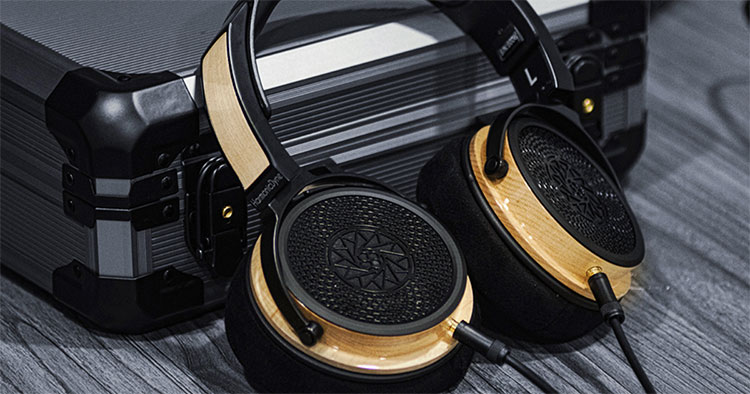
Sound Impressions
Bass
According to the specs sheet, the Poseidon can reach down to 10Hz, and I believe that it can. However, when it comes to the sub-bass, there is an evident roll-off in the overall sub-bass quantity which results in a dispersed sub-bass quality.
Going up into the mid-bass region, there is a hump that gives midbass instruments some emphasis and allowing drums and bass guitars to have some weight behind them without being overdone.
Drum hits take on a generally rounded, but still textured character, preventing potential hollowness and conveying the shape and size of the drums easily. This results in a bass region that can provide a weighty and powerful presentation while maintaining control over the bass region.
Mids
The first thing that I noticed with the midrange is that it is relatively forward sounding compared to the rest of the frequency spectrum. While already being forward, there is a small injection of euphony to the midrange, allowing vocals to have a measured amount of richness.
This makes vocals a bit sweeter while not being overdone, which allows them to still sound natural while being more pleasant overall. The sweetness in the vocal range also holds true for the harmonic overtones of acoustic instruments.
Acoustic instruments have a clear and distinct sound to them, with guitars having a full-bodied sound while allowing plucks to remain singular. Piano keys on the other hand still take on that full-bodied sound while having a natural and warm character.
Treble
Compared to the midrange, the treble is well extended but more neutral in presence, which gives midrange instruments an overall warmer tilt. However, it doesn’t mean that treble-focused instruments won’t shine through. Cymbal crashes remain crisp, giving each note more bite while retaining a crystalline character.
Whistling is reproduced accurately as well, particularly with the extra sense of airiness and space that is conveyed by a more extended treble range. The Poseidon stays away from sibilance, and one way to achieve this is by glossing over some of the details particularly with the treble range.
Soundstage
With the more extended treble range, the Poseidon presents an impressively delineated and accurate imaging presentation. This allows the images within the soundstage to be separated with a layer of air between them.
With a more compressed dynamic range though, the Poseidon also has a more limited range when it comes to the depth of the soundstage. Although there are images that can come closer and a bit further away from my head, the space the images occupy in terms of depth isn’t proportional to the amount of space that they occupy in terms of width.
With the airy presentation, Poseidon can also create an expansive soundstage allowing the environment of the recording to be recreated honestly. There is a sense of how large the venue where the recording was done, while not filling out the entire soundstage due to the limitations in terms of recreating depth.
Click on page 2 below for pairings and select comparisons

